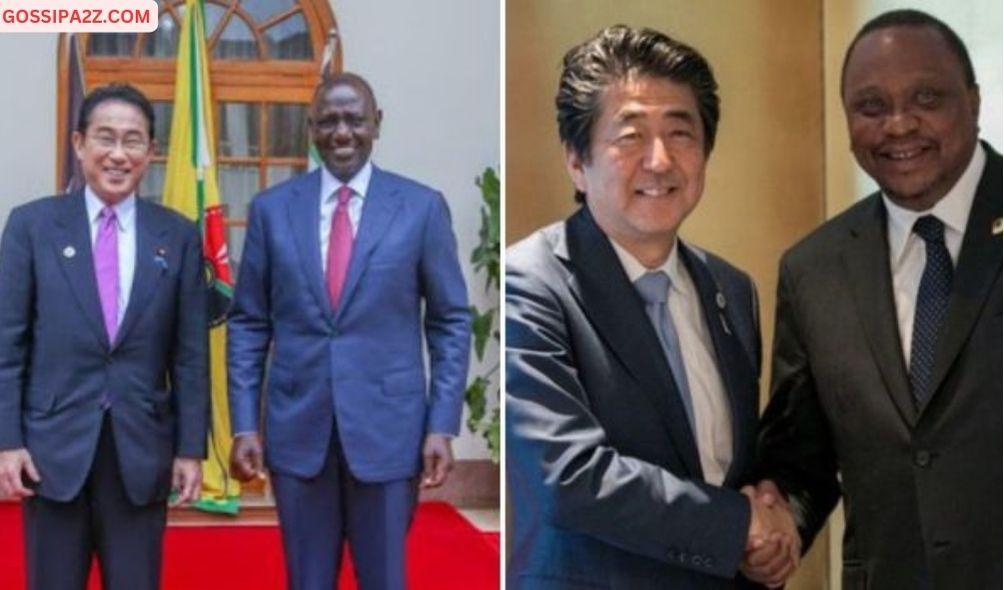Decoding Ruto’s Japan Trip: How It Diverges from Uhuru’s
On Monday night, President William Ruto departed for Japan on a journey characterized by State House as a state visit, marking the initial occurrence of such an event by a Kenyan head of state in two decades.
In an official statement, State House Spokesperson Hussein Mohammed declared that the visit follows a previous one made by the deceased President Mwai Kibaki.
“This marks the first State visit by a Kenyan Head of State since President Mwai Kibaki’s 20 years ago. The visit follows Prime Minister Fumio Kishida’s State Visit to Kenya in May 2023 and celebrates 60 years of diplomatic relations between Kenya and Japan,” the statement read in part.
“During his visit to Japan, the President will engage in bilateral talks with Prime Minister Kishida, with a focus on economic cooperation in key sectors such as health, ICT, infrastructure, energy, and financial services.”
Right after the announcement, some Kenyan individuals went on social media, presenting proof of President Uhuru Kenyatta’s trip to Japan.
Included in the shared content were news articles and social media posts from the State House, depicting the ex-head of State’s visit to Japan in October 2019. During this visit, he was warmly welcomed by delegates and presented with flowers.
“This is not Uhuru visit Japan? Tuwache ushamba jamani (Let us style up),” questioned Kileleshwa MCA Robert Alai.
Difference Between a State Visit and an Official Visit by a President
State Visit
In the realm of diplomacy, a state visit is regarded as the utmost level of diplomatic interaction between two nations, specifically reserved for leaders identified as robust allies.
The occasion involves an official visit led by a President, excluding the government, and is preceded by an invitation extended by the host country.
To strengthen the ties between the two nations, the hosting President demonstrates a profound level of hospitality by engaging in ceremonial activities such as playing national anthems and conducting a formal inspection of the guard of honor for their esteemed guest.
Before his trip to Japan, Ruto extended identical services, which involved presenting a 21-gun salute to welcome Poland’s President Andrzej Duda during his visit.
ALSO READ:
- “Two Groups, One Agenda”: Gachagua Accuses Raila of Secret Political Deals
- Exclusive: Ida Odinga’s 75th Birthday Party in Karen (Photos)
- FKF President Discloses Exact Amount Paid to Harambee Stars Players
- Gachagua’s Ally Senator John Methu Admits Ruto Might Win 2027 Elections
- Maraga Explains Why He Hasn’t Campaigned in Kisii Despite 2027 Bid
Ruto traveled to Japan with a team of fewer than 10 delegates, and the Japanese government will cover his expenses. Additionally, he is scheduled to participate in a dinner gala hosted by the Japanese government.
In Japan, it is anticipated that Ruto will endorse agreements in the fields of public-private collaborations and infrastructure initiatives. Discussions will also encompass the allocation of Ksh160 billion in funding.
In May of the previous year, Ruto welcomed Japanese Prime Minister Kishida Fumio to the State House.
Official Visit
On the contrary, an authorized trip refers to a journey to a different nation, potentially involving a President or government representatives.
The authority figure is typically joined by a group of at least six individuals and may receive certain honors, though this is not always the case.
Working Visit
A working visit involves a delegation dispatched from one country to another with the sole purpose of engaging in official discussions related to matters that impact both nations.
Decoding Ruto’s Japan Trip: How It Diverges from Uhuru’s
